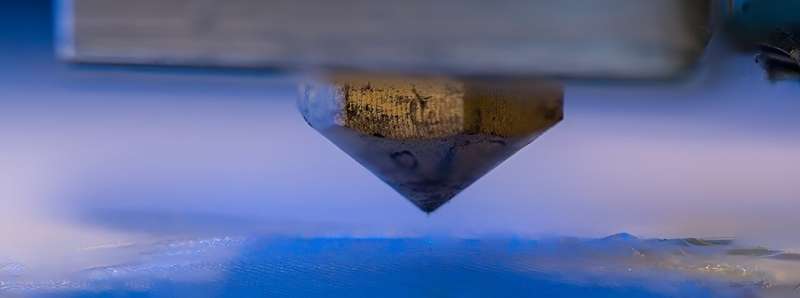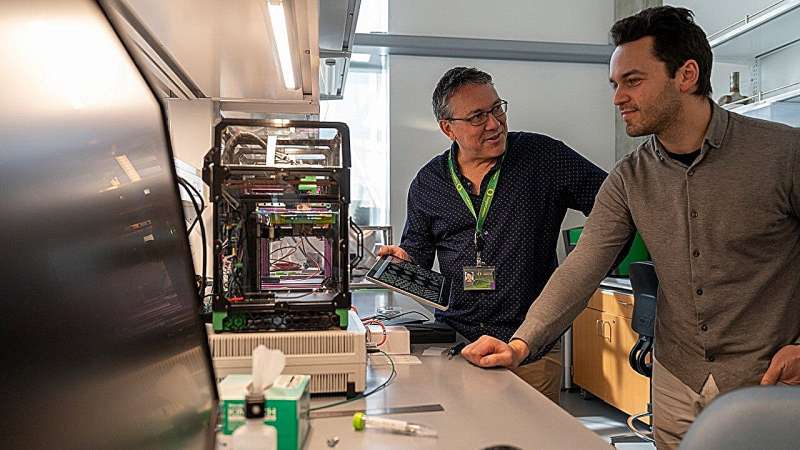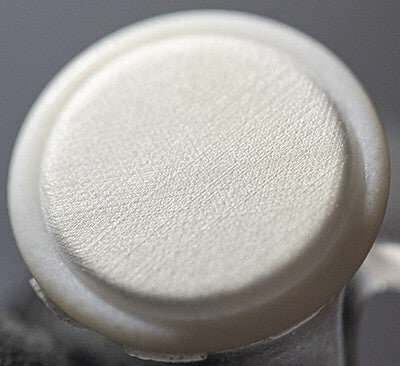This article has been reviewed according to Science X's editorial process and policies. Editors have highlighted the following attributes while ensuring the content's credibility:
fact-checked
peer-reviewed publication
trusted source
proofread
A more realistic artificial skin may lead to medical advances

A new bioengineered skin model could improve testing of skincare products and lead to better ways to heal damaged skin.
University of Oregon researchers have teamed up with scientists with the French personal care company L'Oréal to develop a multilayered artificial skin that more accurately mimics real human skin, and can be grown in just 18 days. The advance relies on a novel 3D printing technique invented by Paul Dalton, an associate professor in the Phil and Penny Knight Campus for Accelerating Scientific Impact at the UO.
The research was published March 7 in the journal Advanced Functional Materials.
"This is the first known case of replicating quality skin tissue at full thickness, using different kinds of cells separated by a membrane," said Ievgenii Liashenko, a research engineer in Dalton's lab.
Creating an artificial skin isn't as simple as growing cells in a petri dish. Real skin has multiple layers, with different kinds of cells that perform distinct functions. And in the body, cells are supported by an external network of proteins and other molecules. Called the extracellular matrix, this system helps cells stay in position and communicate with their neighbors, which is key to keeping all systems working properly.
To replicate this complex environment, the researchers designed a two-layered artificial skin, with the layers separated by a membrane.

Researchers from Dalton's lab and L'Oréal co-developed plastic scaffolds that mimic the extracellular matrix via a network of finely structured 3D printed threads. Then, L'Oréal researchers grew cultured cells in those scaffolds to create the artificial skin, with different cell types growing in each layer. The membrane prevents the cells in the different layers from mixing as they develop.
"Other attempts don't have the same layering—it actually looks like real skin," said Dalton, who is the Bradshaw and Holzapfel Research Professor in Transformational Science and Mathematics.
The underlying scaffolds resemble a mesh material made of many spaghetti-like threads, each much thinner than a human hair. To make the porous scaffold, members of Dalton's team used a 3D printing technique they've developed called melt electrowriting. In that technique, an electric field pulls the molten printing plastic from a nozzle into a thin thread, enabling very precise control over the printing.
Some 3D printing techniques can create very fine details, but only small objects, Dalton said.
Other techniques allow easy fabrication of larger pieces, but at the expense of resolution. Melt electrowriting bridges that gap, allowing engineers to create relatively large objects with fine details.
The new skin model can be grown in just 18 days, the researchers found, rather than the 21 to 35 days it took to create previous scaffold-based artificial skin models. That makes it more viable to use in commercial lab testing.

L'Oréal is currently using the artificial skin to test cosmetics and skin care products. Going forward, both Dalton's team and L'Oréal researchers plan to explore the many other potential uses for the underlying scaffolding in skin tissue engineering.
Other potential skin-related applications include healing diabetic foot ulcers and creating skin grafts for burn patients. Beyond skin, the scaffolds developed by Dalton's team could support myriad biomedical applications, such as artificial blood vessels and structures to help regrow damaged nerves.
"While we've made this big advance with the skin, the design of the scaffold is crucial and could be applied more broadly," Dalton said. "There are so many diseases and injuries in the world that aren't being solved, so having an extra tool to try to tackle these is really valuable."
The materials used in the scaffold are already FDA- approved for use inside the human body, making the path to real-world application smoother.
The fabrication facilities at the Knight Campus make it possible for Dalton's team to scale up production of the materials, Dalton said. "This is the part of the Knight Campus projecting its expertise beyond UO to influence state-of-the-art research fields globally."
More information: Fabien Girard et al, First Advanced Bilayer Scaffolds for Tailored Skin Tissue Engineering Produced via Electrospinning and Melt Electrowriting, Advanced Functional Materials (2024). DOI: 10.1002/adfm.202314757



















